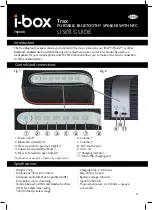
Configuring the internal baseband source
R&S
®
SMM100A
87
User Manual 1179.1341.02 ─ 05
For details, see the R&S
SMM100A HRP UWB 802.15.4 user manual.
EUTRA/LTE Rel. 8, Rel. 9, Rel. 10, Rel. 11, Rel. 12, Rel. 13/14, Cellular IoT, incl.
Enhancements
This digital standard requires an instrument equipped with the EUTRA/LTE options
R&S
SMM-K55/-K69/-K81/-K84/-K85/-K112/-K113/-K115/-K119/-K143.
These options provide functionality to generate signals in accordance with the 3GPP
standard EUTRA/LTE Rel. 8, Rel. 9, Rel. 10, Rel. 11, Rel. 12 and Rel. 13/14.
For details, see the R&S
SMM100A EUTRA/LTE user manual.
5G New Radio
This functionality requires an instrument equipped with the 5G New Radio option
R&S
SMM-K144.
This option provides functionality to generate signals in accordance with the 3GPP
standard New Radio Rel. 15.
For details, see the R&S
SMM100A 5G New Radio user manual.
OFDM Signal Generation
This functionality requires an instrument equipped with the OFDM Signal Generation
option R&S
SMM-K114.
This option provides functionality to generate OFDM signals and signals according to
predefined OFDM modulation schemes.
For details, see the R&S
SMM100A OFDM Signal Generation user manual.
NFC/EMV
This digital standard requires an instrument equipped with the NFC/EMV option
R&S
SMM-K89.
The NFC/EVM option provides functionality to generate signals in accordance with the
short-range wireless connectivity technology NFC-A/B/F and the EMV standard.
For details, see the R&S
SMM100ANFC A/B/F user manual.
4.4
Common functions and settings in the baseband
domain
This chapter describes basic signal generation settings that are common to many gen-
eration tasks, regardless of the selected baseband source or digital standard. If you
perform a specific signal generation task, be sure to check the specific description for
settings that can deviate from these common settings. For example, a specific signal
generation task is to generate a signal according to a digital standard.
Common functions and settings in the baseband domain
















































